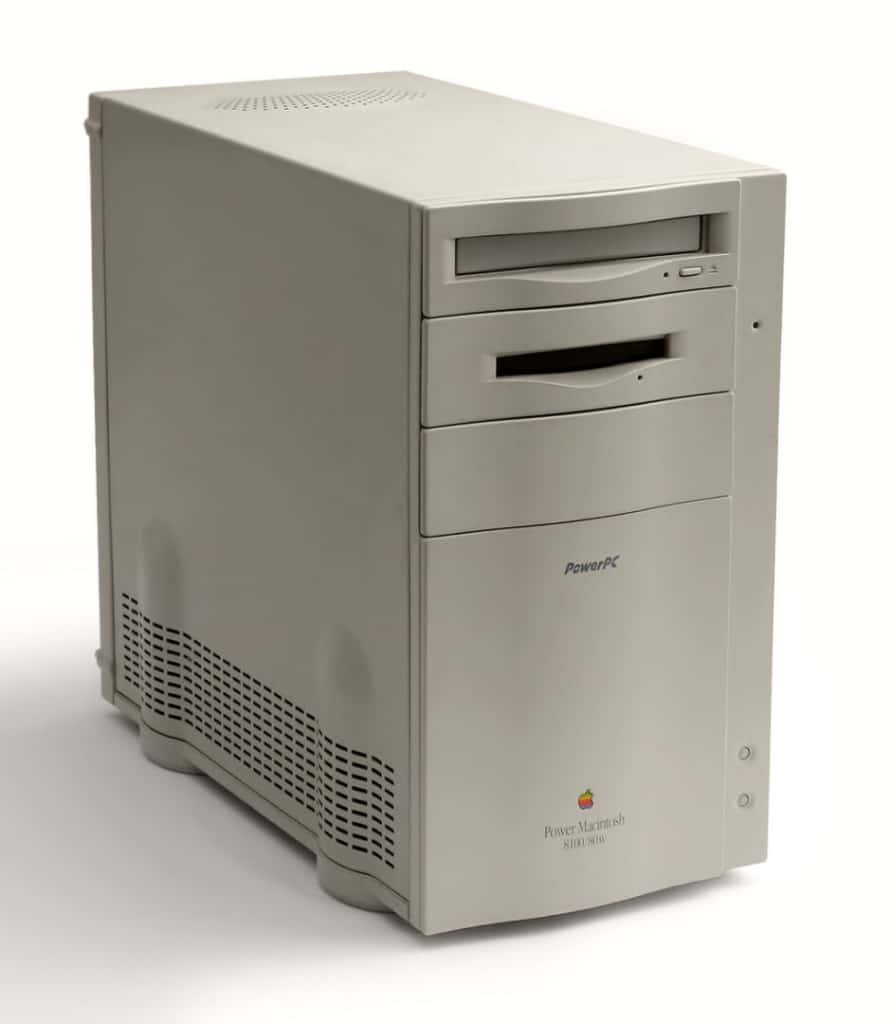In the ever-evolving world of personal computers, there are some iconic devices that have left an indelible mark on the industry. Among these, the Power Macintosh 8115 stands tall as a testament to Apple’s commitment to innovation. Introduced in 1994, this powerhouse of a machine pushed the boundaries of technology, delivering a remarkable user experience for power users.
Upon its release on November 3, 1994, the Power Macintosh 8115 proved to be a trailblazer, equipped with the cutting-edge 110 MHz PowerPC 601 processor, 16 MB of RAM, a 2 GB hard drive, a 2x CD-ROM drive, and a 1.44 MB floppy drive. These specifications may seem modest by today’s standards, but at the time, they were enough to impress even the most discerning power users.
The computer’s performance and expansive storage capacity marked a significant leap forward from its predecessors, setting it apart as a symbol of technological progress and Apple’s unwavering commitment to delivering top-notch computing experiences.
As Apple enthusiasts reveled in the performance and capabilities of the Power Macintosh 8115, its time in the limelight was unfortunately brief. Just a year after its triumphant debut, on August 5, 1995, the company decided to discontinue this exceptional machine. Though it may have vanished from the market, its legacy endured, leaving an everlasting impression on the personal computer industry.
As we fast forward 29 years, the Power Macintosh 8115 may seem like a distant memory, but its impact remains palpable. This remarkable machine played a pivotal role in shaping the future of personal computers. It challenged conventional notions and inspired the development of even more powerful and user-friendly devices.
For those who had the opportunity to experience the Power Macintosh 8115, it is a cherished nostalgic throwback to a time when computers were larger, yet filled with potential and wonder. The fond memories it elicits serve as a reminder of how far the technology has come and how innovation continues to drive the industry forward.
The Power Macintosh 8115 boasted an expandable tower case design, which was also seen in the Quadra 800. This design allowed for future enhancements and upgrades, empowering users to adapt their computers to meet their evolving needs seamlessly.
Interestingly, the Power Macintosh 8115 was sold exclusively in Europe and Asia, bypassing the North American market. Nonetheless, its server version, the Workgroup Server 8150, was made available worldwide. This exclusivity lent an air of mystery to the device, making it all the more coveted by tech enthusiasts across the globe.
Though the Power Macintosh 8115 is now a vintage relic of the past, it continues to hold a special place in the hearts of Apple enthusiasts and tech historians. As we marvel at the present-day wonders of personal computing, it’s essential to pay homage to the pioneers that paved the way for the technology we enjoy today. The Power Macintosh 8115 will forever be remembered as an emblem of Apple’s dedication to innovation and its significant role in shaping the course of computing history.

Power Macintosh 8115 Details
| Introduced | November 3, 1994 |
| Discontinued | August 5, 1995 |
| Model Identifier | 40 |
| Model Number | M1688 |
| Order Number | M4137J/A |
| Original Price | Unknown |
| Colors | Platinum |
| Weight | 25 Ibs. 11.339 KG |
| Dimensions | 14” H x 7.7” W x 15.75” D 35.56 cm H x 19.55 cm W x 40 cm D |
Power Mac 8115 Tech Specs
Processor
| Processor | PowerPC 601 |
| Processor Speed | 110 MHz |
| Architecture | 32-bit |
| Number of Cores | 1 |
| System Bus | 36.7 MHz |
| Cache | 32 KB L1 256 KB L2 |
| Coprocessor | Built-in FPU |
Storage & Media
| Storage | 2 GB |
| Media | 1 – 1.44 MB Floppy 1 – 2x CD-ROM |
Memory
| Built-in Memory | 16 MB |
| Maximum Memory | 264 MB |
| Memory Slots | 8 – 72 pin SIMMs (Group of 2) |
| Minimum Speed | 80 ns |
| ROM | Unknown |
| Interleaving Support | No |
Display
| Built-in Display | None |
Graphics
| Graphics Card | None |
| Graphics Memory | 2 MB 4 MB |
| Display Connection | 1 – DB-15 1 – HDI-45 |
Expansion
| Expansion Slots | 3 – 7″ NuBus 1 – PDS (Filled by Video or AV Card) |
| Hard Drive Interface | SCSI |
Connections
| Ethernet | AAUI-15 |
| Modem | None |
| Wi-Fi | None |
| Bluetooth | None |
| ADB | 1 |
| Serial | 2 |
| SCSI | 1 – DB-25 |
| Floppy Port | None |
| Audio In | 1 – 3.5-mm analog input jack |
| Audio Out | 1 – 3.5-mm analog output jack 1 – Built-in speaker |
| Display | 1 – DB-15 1 – HDI-45 |
Software
| Original OS | System Software 7.5 |
| Maximum OS | Mac OS 9.1 |
| Firmware | Macintosh ROM |
Power
| Backup Battery | 3.6 V lithium |
| Maximum Continuous Power | 150 W |
| Line Voltage | 100-240 V |
Further Reading and References
- Power Macintosh 8115/110: Technical Specifications – Apple Support
- Power Macintosh – Wikipedia
- Power Macintosh 8115 – IT History Society
Disclaimer: The data presented in this article is under continuous development and has been manually collected from various sources based on their availability. The author of this article may revise this dataset as additional research is conducted and reviewed. Please note that the information is provided “as is” and “as available” without express or implied warranties. The author cannot be held responsible for any omissions, inaccuracies, or errors in the published information. Any warranties relating to this information are hereby disclaimed.
Last updated: August 5, 2023
